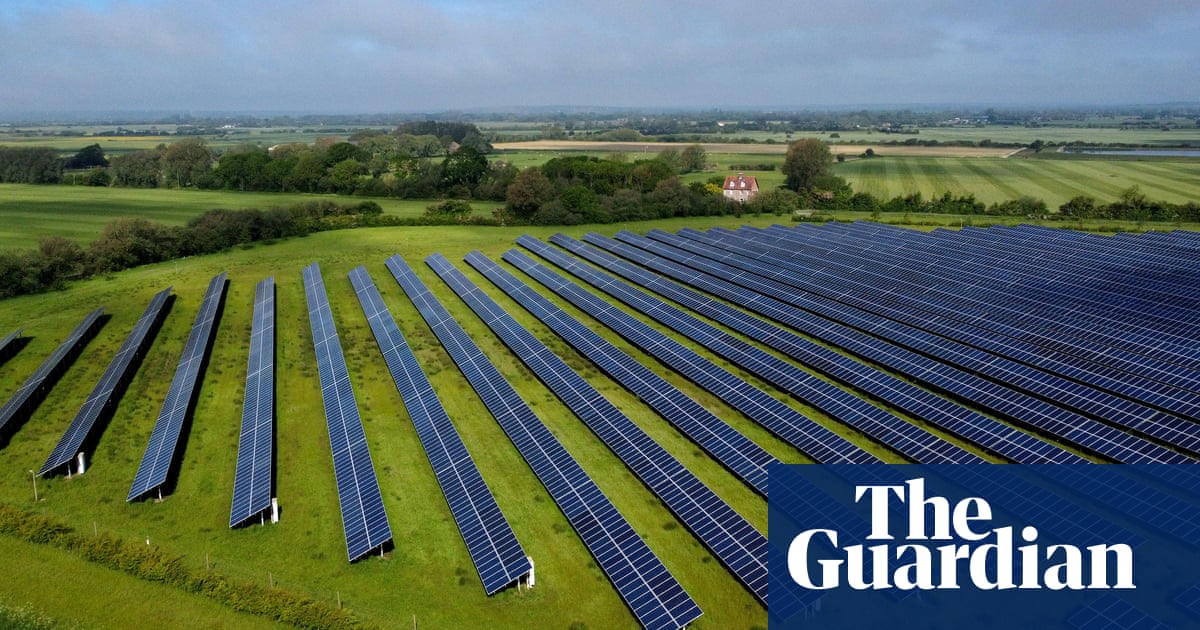The government will need to “take on net-zero nimbys” and ramp up public investment to decarbonise Britain’s homes, transport and electricity system, a leading thinktank has said.
With Keir Starmer promising a rapid transition to decarbonise the power system by 2030, a report by the Resolution Foundation said achieving the target would require more government spending and private investment.
However, the thinktank said projects required to meet the goal – including new solar farms, battery storage, and onshore wind turbines – were likely to face resistance from local groups. It said many renewables projects would take place in wealthier parts of the country, and two-thirds of proposed solar projects would be in the richest 40% of neighbourhoods.
“Doing this effectively will require overcoming opposition to development from net-zero nimbys, who often live in wealthier parts of the country,” said Jonny Marshall, a senior economist at the Resolution Foundation.
“The government must be prepared to win these battles, which won’t be popular with some voters but are vital for the country as a whole.”
The thinktank said options for dealing with the friction could include taking responsibility out of local hands to unblock development, or providing financial incentives to smooth opposition. Alternatively, allowing local opposition could “stymie decarbonisation”.
Starmer’s government is already taking steps by lifting a de facto ban on new onshore wind turbines in England, relaxing planning laws, and dropping the legal defence of a proposed new coalmine. Ed Miliband, the energy secretary, last week drew criticism from Conservative MPs over the green-lighting of a new £600m energy farm in their constituencies on the Cambridgeshire/Suffolk border.
…
A Department for Energy Security and Net Zero spokesperson said the government was “wasting no time” in taking action on green energy.
“In just one week, we have swept away barriers to onshore wind farms, consented more solar power than has been installed in the past year and set out plans for a solar rooftop revolution.
“It is also important we listen to people’s concerns, and where communities host clean energy infrastructure they should benefit directly from it.”



I hope the picture is just for illustration purposes because that’s a stupid ass pattern to deploy solar panels in 2024.
How do we deploy solar panels in 2024?
The shown disposition maximizes energy output at peak per panel. That is how you deploy solar panels if solar panels are expensive and you need as much energy as possible, no matter when.
Those two things are no longer the case. Solar panels are cheaper than dirt and there is overproduction at peak solar.
So the thing to do now is to orient them east/west without gaps. That ensures you have lots of power earlier and later in the day, while lowering the peak yield that would be wasted anyway to low spot prices.
TLDR arranged close together facing away from each other.